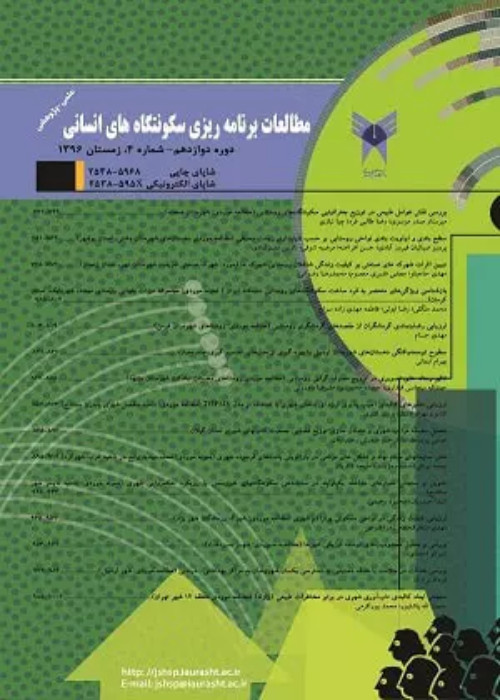A Comparative Study of the Development of Urban Areas in Rasht by Using Multi Criteria Evaluation Methods
Author(s):
Abstract:
Lack of resources and facilities in urban areas makes essential the efficiency assessment of areas. So, resources should be allocated in such a way that most services can be offered through existing resources. To identify the development or underdevelopment of areas, it is necessary to study inequalities patterns and differences between them, and also, studying the degree of superiority of one place compared to the structure of similar locations in the city. The recognition of the existing differences among different areas in the city in terms of enjoyment of various indicators, in order to be aware of the development or deprivation levels, reduce regional disparities and set programs in accordance with the conditions and facilities of each area is an unavoidable necessity.
In this study, attention has been paid to determining and ranking the degree of development of urban areas in Rasht based on 63 indicators in five educational, health care, socio-cultural, economic-commercial, and urban civil installations. To achieve the objectives of the study, the Numerical Taxonomy model, Morris Model and TOPSIS model have been used. By applying these models and analysis, each of the five areas of Rasht city, the ranking and the level of development of each area has been determined separately.
The results of the study show that more facilities and services have been focused on the city center. Therefore, inequality in five areas is observed with significant difference. As such, in analyzing all three models, areas one and two have more favorable situation, but area five is of the most deprived regions. In fact, the farther the areas are from the center of the city, the lower facilities and services they will receive.
This is the result of polar policies growth, as a result of which, all of the facilities and power are concentrated on one or more areas, and other areas act as marginal. Due to the nature and the difference in method of ranking the indexes, degree of development of study areas in each model is different from the other model. In order to achieve the same result in the assessment of development areas, percentage of changes, intensity of changes, and coefficient of variation were calculated and the results were extracted based on the divided indicators.
In this study, attention has been paid to determining and ranking the degree of development of urban areas in Rasht based on 63 indicators in five educational, health care, socio-cultural, economic-commercial, and urban civil installations. To achieve the objectives of the study, the Numerical Taxonomy model, Morris Model and TOPSIS model have been used. By applying these models and analysis, each of the five areas of Rasht city, the ranking and the level of development of each area has been determined separately.
The results of the study show that more facilities and services have been focused on the city center. Therefore, inequality in five areas is observed with significant difference. As such, in analyzing all three models, areas one and two have more favorable situation, but area five is of the most deprived regions. In fact, the farther the areas are from the center of the city, the lower facilities and services they will receive.
This is the result of polar policies growth, as a result of which, all of the facilities and power are concentrated on one or more areas, and other areas act as marginal. Due to the nature and the difference in method of ranking the indexes, degree of development of study areas in each model is different from the other model. In order to achieve the same result in the assessment of development areas, percentage of changes, intensity of changes, and coefficient of variation were calculated and the results were extracted based on the divided indicators.
Keywords:
Language:
Persian
Published:
Journal of Studies Of Human Settlements Planning, Volume:11 Issue: 34, 2016
Pages:
1 to 16
magiran.com/p1568550
دانلود و مطالعه متن این مقاله با یکی از روشهای زیر امکان پذیر است:
اشتراک شخصی
با عضویت و پرداخت آنلاین حق اشتراک یکساله به مبلغ 1,390,000ريال میتوانید 70 عنوان مطلب دانلود کنید!
اشتراک سازمانی
به کتابخانه دانشگاه یا محل کار خود پیشنهاد کنید تا اشتراک سازمانی این پایگاه را برای دسترسی نامحدود همه کاربران به متن مطالب تهیه نمایند!
توجه!
- حق عضویت دریافتی صرف حمایت از نشریات عضو و نگهداری، تکمیل و توسعه مگیران میشود.
- پرداخت حق اشتراک و دانلود مقالات اجازه بازنشر آن در سایر رسانههای چاپی و دیجیتال را به کاربر نمیدهد.
In order to view content subscription is required
Personal subscription
Subscribe magiran.com for 70 € euros via PayPal and download 70 articles during a year.
Organization subscription
Please contact us to subscribe your university or library for unlimited access!



